-

Nov
16
Interpretive Summary: Heat shock protein 27 regulates myogenic and self-renewal potential of bovine satellite cells under heat stress

This study aimed to elucidate the response of bovine satellite cells to heat exposure. Satellite cells were isolated from Holstein bulls and subjected to varying temperatures. Transcriptional, proteomic, and proliferative changes were assessed.
Read more
-

Nov
16
Interpretive Summary: Temperature Fluctuations Modulate Molecular Mechanisms in Skeletal Muscle and Influence Growth Potential in Beef Steers
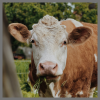
In this study, we investigated the effects of severe temperature fluctuations on beef cattle and their cellular and physiological responses. Our findings demonstrate that even moderate temperature swings can cause thermal stress in cattle, leading to observable behavioral signs such as extended tongue protrusion, reduced appetite, excessive salivation, and increased respiratory rate.
Read more
-

Nov
16
Interpretive Summary: Technical note: colorimetric methods for accurate determination of nutrient composition in beef cow colostrum and milk
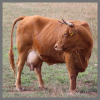
The purpose was to develop laboratory methods to measure lactose, fat, protein, and urea nitrogen in beef cow colostrum (first milk) and milk and to validate single-quarter colostrum yield as a predictor of total colostrum yield. Additionally, new methods were compared with Fourier transform infrared spectroscopy (FTIR), which is the primary method of dairy cow milk nutrient analysis.
Read more
-

Nov
16
Interpretive Summary: Distinct myofibrillar sub-proteomic profiles are associated with the instrumental texture of aged pork loin

A primary goal of meat production is to efficiently produce safe, high-quality products. Competing interests within the goal complicate this seemingly simple aspiration. Consequently, it is necessary to emphasize efforts to enhance our comprehension of biological and molecular factors that influence quality, safety, and efficient meat production.
Read more
-

Nov
16
Interpretive Summary: Effects of the F94L myostatin gene mutation in beef × dairy crossed cattle on strip loin steak dimensionality, shear force, and sensory attributes
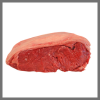
In beef × dairy steers, one copy of the F94L allele decreased steak angularity in the strip loin and fat-associated flavor attributes in tenderloin steaks, while tenderness was not impacted. Reduced strip loin steak angularity addresses inherent deficiencies in dairy and dairy-cross carcasses; thus, the F94L allele could improve the consumer and chef acceptability of beef × dairy strip loin steaks.
Read more
-

Nov
16
Interpretive Summary: Pork quality traits and associated muscle metabolic changes in pigs under chronic prenatal and postnatal heat stress
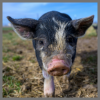
Pig thermal environment and especially chronic heat stress (HS) can affect animal growth and physiology, with potential impacts on carcass and pork quality. The effects of chronic HS during postnatal growth (GHS) on pork quality are controversial, but the effects of chronic HS during the pig prenatal period (PHS) or of combined PHS and GHS on carcass and meat traits are even less characterized.
Read more
-

Nov
16
Interpretive Summary: Maternal nutrient restriction during late gestation reduces vigor and alters blood chemistry and hematology in neonatal beef calves
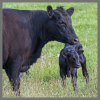
Early life after birth is challenging for beef calves, but a successful transition from the uterus to the outside environment is necessary for calves to survive and thrive pre-weaning. Despite this, limited research has investigated how maternal undernutrition during pregnancy affects the vigor and metabolism of beef calves during early life.
Read more
-

Nov
08
Interpretive Summary: Dietary glycine supplementation enhances the growth performance of hybrid striped bass (Morone saxatilis ♀× Morone chrysops ♂) fed soybean meal-based diets
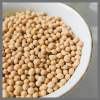
Animal agriculture (including aquaculture) provides high-quality protein for improving human nutrition and health. The United States is the top producer of hybrid striped bass (HSB) in the world as both food and sport fish. Fishmeal has traditionally been used as the major protein feedstuff in HSB diets, but feeding fish with fishmeal is not sustainable in the industry.
Read more
-

Nov
08
Interpretive Summary: The effect of bone and analytical methods on the assessment of bone mineralization response to dietary phosphorus, phytase, and vitamin D in nursery pigs
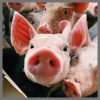
Lameness is defined as impaired movement or deviation from normal gait. There are many factors that can contribute to lameness, including but not limited to: infectious disease, genetic and conformational anomaly, and toxicity that affects the bone, muscle, and nervous systems. Metabolic bone disease is another cause of lameness in swine production and can be caused by inappropriate levels of essential vitamins or minerals.
Read more
-

Nov
08
Interpretive Summary: Impact of a Saccharomyces cerevisiae fermentation product during an intestinal barrier challenge in lactating Holstein cows on ileal microbiota and markers of tissue structure and immunity
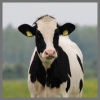
Stressors, including limited access to feed, heat stress, transportation, and disease are factors that reduce integrity of the gut epithelial barrier in livestock. Feeding Saccharomyces cerevisiae fermentation products (SCFP) mitigated immunological, aflatoxin, and subclinical mastitis challenges, heat stress, and grain-based subacute ruminal acidosis indicating it also could alleviate gut damage.
Read more
-

Nov
08
Interpretive Summary: Chemical composition of horse hooves with functional qualities for competing barefoot

Barefoot racing is a common practice within the harness racing industry, as it may make a horse run faster. However, not all horses have hooves of sufficient quality to withstand the wear from the track surface during racing, creating a risk of hoof damage.
Read more
-

Nov
08
Interpretive Summary: Dietary supplementation with garcinol during late gestation alleviates disorders of bile acid metabolism and improves the performance of sows and newborn piglets
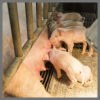
The elevated maternal serum bile acid (BA) levels in late gestation leads to accumulation of BA in fetal tissues, and thus increases the risk of fetal mortality and metabolic disease of offspring. It has confirmed that BA disordered and oxidative damage are intimately related.
Read more
-

Nov
08
Interpretive Summary: Differential sensitivity of climate conditions on birth weight genetic values in mice divergently selected for birth weight residual variance
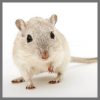
Two mice lines obtained by divergent selection for birth weight residual variance were used to determine whether environmental factors could differently affect the homogeneous and heterogeneous lines. The maximum temperature 1 wk before parturition (MXTW) had the higher impact on the birth weight of the animals.
Read more
-

Nov
08
Interpretive Summary: Effects of weight loss and feeding specially formulated diets on the body composition, blood metabolite profiles, voluntary physical activity, and fecal metabolites and microbiota of overweight cats

The objective of this study was to determine the effects of diet, restricted feeding and weight loss on body composition, voluntary physical activity, blood hormones and metabolites, and fecal metabolites and microbiota of overweight cats. Overweight cats were allotted to a control diet (OR) or weight loss diet (FT) and fed to lose ~1.0% body weight/week for 24 wk.
Read more
-

Nov
02
Interpretive Summary: Predicting microbial crude protein synthesis in cattle from intakes of dietary energy and crude protein
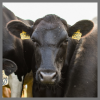
The ability to accurately and precisely predict microbial protein synthesis is crucial in predicting the supply of metabolizable protein in beef cattle. We updated a database previously used to predict microbial crude protein (CP) supply in beef cattle. Then we evaluated the utility of using total digestible nutrients (TDN) and different measures of energy intake to predict ruminal microbial protein synthesis.
Read more
-

Nov
02
Interpretive Summary: Technical note: Validation of energy dispersive X-ray fluorescence for determination of indigestible markers in ruminant fecal and rumen fluid samples
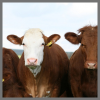
Markers are elements supplied to an animal to help determine the digestibility of various feedstuffs. Studying digestibility allows us to improve how nutrients are used by animals and reduce production costs and environmental impact.
Read more
-

Nov
02
Interpretive Summary: Feeding 3-nitrooxypropanol reduces methane emissions by feedlot cattle on tropical conditions
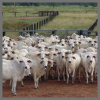
During fiber digestion in the rumen, enteric methane is produced. Methane is a potent greenhouse gas. Recently several studies have focused on developing synthetic compounds and their utilization as specific inhibitors of methanogenesis.
Read more
-

Nov
02
Interpretive Summary: Evaluation of a novel phytase derived from Citrobacter braakii and expressed in Aspergillis oryzae on growth performance and bone mineralization indicators in nursery pigs
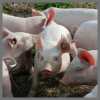
Approximately 60% to 80% of phosphorus (P) in feedstuffs of plant origin is stored in the form of phytic acid. Phytase is an enzyme used in swine diets to improve the digestibility of phytate-bound P. As phytase sources continue to advance, their efficacy must be evaluated.
Read more
-

Nov
02
Interpretive Summary: Development of adaptability of foreign breeds of water buffalo in Philippine tropical climate
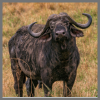
Heat stress disturbs the body’s normal behavioral, immunological, and physiological functions through direct and indirect actions facilitated by alterations in energy balance. Overall, heat stress impairs animal productivity.
Read more
-

Nov
02
Interpretive Summary: Matching livestock to landscape: a proposal of metrics to phenotype grazing distribution from Global Navigation Satellite System collar data

Grazing lands cover above one-third of Earth’s ice-free terrestrial surface, playing a key role as suppliers of ecosystem services, such as livestock feed production, water supply, erosion control, carbon storage, biodiversity conservation, etc. Since grasslands are reliant on weather, primarily rainfall and temperature, climate variability largely affects their performance.
Read more
 NovInterpretive Summary: Heat shock protein 27 regulates myogenic and self-renewal potential of bovine satellite cells under heat stress
NovInterpretive Summary: Heat shock protein 27 regulates myogenic and self-renewal potential of bovine satellite cells under heat stress This study aimed to elucidate the response of bovine satellite cells to heat exposure. Satellite cells were isolated from Holstein bulls and subjected to varying temperatures. Transcriptional, proteomic, and proliferative changes were assessed.
This study aimed to elucidate the response of bovine satellite cells to heat exposure. Satellite cells were isolated from Holstein bulls and subjected to varying temperatures. Transcriptional, proteomic, and proliferative changes were assessed. NovInterpretive Summary: Temperature Fluctuations Modulate Molecular Mechanisms in Skeletal Muscle and Influence Growth Potential in Beef Steers
NovInterpretive Summary: Temperature Fluctuations Modulate Molecular Mechanisms in Skeletal Muscle and Influence Growth Potential in Beef Steers In this study, we investigated the effects of severe temperature fluctuations on beef cattle and their cellular and physiological responses. Our findings demonstrate that even moderate temperature swings can cause thermal stress in cattle, leading to observable behavioral signs such as extended tongue protrusion, reduced appetite, excessive salivation, and increased respiratory rate.
In this study, we investigated the effects of severe temperature fluctuations on beef cattle and their cellular and physiological responses. Our findings demonstrate that even moderate temperature swings can cause thermal stress in cattle, leading to observable behavioral signs such as extended tongue protrusion, reduced appetite, excessive salivation, and increased respiratory rate. NovInterpretive Summary: Technical note: colorimetric methods for accurate determination of nutrient composition in beef cow colostrum and milk
NovInterpretive Summary: Technical note: colorimetric methods for accurate determination of nutrient composition in beef cow colostrum and milk The purpose was to develop laboratory methods to measure lactose, fat, protein, and urea nitrogen in beef cow colostrum (first milk) and milk and to validate single-quarter colostrum yield as a predictor of total colostrum yield. Additionally, new methods were compared with Fourier transform infrared spectroscopy (FTIR), which is the primary method of dairy cow milk nutrient analysis.
The purpose was to develop laboratory methods to measure lactose, fat, protein, and urea nitrogen in beef cow colostrum (first milk) and milk and to validate single-quarter colostrum yield as a predictor of total colostrum yield. Additionally, new methods were compared with Fourier transform infrared spectroscopy (FTIR), which is the primary method of dairy cow milk nutrient analysis. NovInterpretive Summary: Distinct myofibrillar sub-proteomic profiles are associated with the instrumental texture of aged pork loin
NovInterpretive Summary: Distinct myofibrillar sub-proteomic profiles are associated with the instrumental texture of aged pork loin A primary goal of meat production is to efficiently produce safe, high-quality products. Competing interests within the goal complicate this seemingly simple aspiration. Consequently, it is necessary to emphasize efforts to enhance our comprehension of biological and molecular factors that influence quality, safety, and efficient meat production.
A primary goal of meat production is to efficiently produce safe, high-quality products. Competing interests within the goal complicate this seemingly simple aspiration. Consequently, it is necessary to emphasize efforts to enhance our comprehension of biological and molecular factors that influence quality, safety, and efficient meat production. NovInterpretive Summary: Effects of the F94L myostatin gene mutation in beef × dairy crossed cattle on strip loin steak dimensionality, shear force, and sensory attributes
NovInterpretive Summary: Effects of the F94L myostatin gene mutation in beef × dairy crossed cattle on strip loin steak dimensionality, shear force, and sensory attributes In beef × dairy steers, one copy of the F94L allele decreased steak angularity in the strip loin and fat-associated flavor attributes in tenderloin steaks, while tenderness was not impacted. Reduced strip loin steak angularity addresses inherent deficiencies in dairy and dairy-cross carcasses; thus, the F94L allele could improve the consumer and chef acceptability of beef × dairy strip loin steaks.
In beef × dairy steers, one copy of the F94L allele decreased steak angularity in the strip loin and fat-associated flavor attributes in tenderloin steaks, while tenderness was not impacted. Reduced strip loin steak angularity addresses inherent deficiencies in dairy and dairy-cross carcasses; thus, the F94L allele could improve the consumer and chef acceptability of beef × dairy strip loin steaks. NovInterpretive Summary: Pork quality traits and associated muscle metabolic changes in pigs under chronic prenatal and postnatal heat stress
NovInterpretive Summary: Pork quality traits and associated muscle metabolic changes in pigs under chronic prenatal and postnatal heat stress Pig thermal environment and especially chronic heat stress (HS) can affect animal growth and physiology, with potential impacts on carcass and pork quality. The effects of chronic HS during postnatal growth (GHS) on pork quality are controversial, but the effects of chronic HS during the pig prenatal period (PHS) or of combined PHS and GHS on carcass and meat traits are even less characterized.
Pig thermal environment and especially chronic heat stress (HS) can affect animal growth and physiology, with potential impacts on carcass and pork quality. The effects of chronic HS during postnatal growth (GHS) on pork quality are controversial, but the effects of chronic HS during the pig prenatal period (PHS) or of combined PHS and GHS on carcass and meat traits are even less characterized. NovInterpretive Summary: Maternal nutrient restriction during late gestation reduces vigor and alters blood chemistry and hematology in neonatal beef calves
NovInterpretive Summary: Maternal nutrient restriction during late gestation reduces vigor and alters blood chemistry and hematology in neonatal beef calves Early life after birth is challenging for beef calves, but a successful transition from the uterus to the outside environment is necessary for calves to survive and thrive pre-weaning. Despite this, limited research has investigated how maternal undernutrition during pregnancy affects the vigor and metabolism of beef calves during early life.
Early life after birth is challenging for beef calves, but a successful transition from the uterus to the outside environment is necessary for calves to survive and thrive pre-weaning. Despite this, limited research has investigated how maternal undernutrition during pregnancy affects the vigor and metabolism of beef calves during early life. NovInterpretive Summary: Dietary glycine supplementation enhances the growth performance of hybrid striped bass (Morone saxatilis ♀× Morone chrysops ♂) fed soybean meal-based diets
NovInterpretive Summary: Dietary glycine supplementation enhances the growth performance of hybrid striped bass (Morone saxatilis ♀× Morone chrysops ♂) fed soybean meal-based diets Animal agriculture (including aquaculture) provides high-quality protein for improving human nutrition and health. The United States is the top producer of hybrid striped bass (HSB) in the world as both food and sport fish. Fishmeal has traditionally been used as the major protein feedstuff in HSB diets, but feeding fish with fishmeal is not sustainable in the industry.
Animal agriculture (including aquaculture) provides high-quality protein for improving human nutrition and health. The United States is the top producer of hybrid striped bass (HSB) in the world as both food and sport fish. Fishmeal has traditionally been used as the major protein feedstuff in HSB diets, but feeding fish with fishmeal is not sustainable in the industry. NovInterpretive Summary: The effect of bone and analytical methods on the assessment of bone mineralization response to dietary phosphorus, phytase, and vitamin D in nursery pigs
NovInterpretive Summary: The effect of bone and analytical methods on the assessment of bone mineralization response to dietary phosphorus, phytase, and vitamin D in nursery pigs Lameness is defined as impaired movement or deviation from normal gait. There are many factors that can contribute to lameness, including but not limited to: infectious disease, genetic and conformational anomaly, and toxicity that affects the bone, muscle, and nervous systems. Metabolic bone disease is another cause of lameness in swine production and can be caused by inappropriate levels of essential vitamins or minerals.
Lameness is defined as impaired movement or deviation from normal gait. There are many factors that can contribute to lameness, including but not limited to: infectious disease, genetic and conformational anomaly, and toxicity that affects the bone, muscle, and nervous systems. Metabolic bone disease is another cause of lameness in swine production and can be caused by inappropriate levels of essential vitamins or minerals. NovInterpretive Summary: Impact of a Saccharomyces cerevisiae fermentation product during an intestinal barrier challenge in lactating Holstein cows on ileal microbiota and markers of tissue structure and immunity
NovInterpretive Summary: Impact of a Saccharomyces cerevisiae fermentation product during an intestinal barrier challenge in lactating Holstein cows on ileal microbiota and markers of tissue structure and immunity Stressors, including limited access to feed, heat stress, transportation, and disease are factors that reduce integrity of the gut epithelial barrier in livestock. Feeding Saccharomyces cerevisiae fermentation products (SCFP) mitigated immunological, aflatoxin, and subclinical mastitis challenges, heat stress, and grain-based subacute ruminal acidosis indicating it also could alleviate gut damage.
Stressors, including limited access to feed, heat stress, transportation, and disease are factors that reduce integrity of the gut epithelial barrier in livestock. Feeding Saccharomyces cerevisiae fermentation products (SCFP) mitigated immunological, aflatoxin, and subclinical mastitis challenges, heat stress, and grain-based subacute ruminal acidosis indicating it also could alleviate gut damage. NovInterpretive Summary: Chemical composition of horse hooves with functional qualities for competing barefoot
NovInterpretive Summary: Chemical composition of horse hooves with functional qualities for competing barefoot Barefoot racing is a common practice within the harness racing industry, as it may make a horse run faster. However, not all horses have hooves of sufficient quality to withstand the wear from the track surface during racing, creating a risk of hoof damage.
Barefoot racing is a common practice within the harness racing industry, as it may make a horse run faster. However, not all horses have hooves of sufficient quality to withstand the wear from the track surface during racing, creating a risk of hoof damage. NovInterpretive Summary: Dietary supplementation with garcinol during late gestation alleviates disorders of bile acid metabolism and improves the performance of sows and newborn piglets
NovInterpretive Summary: Dietary supplementation with garcinol during late gestation alleviates disorders of bile acid metabolism and improves the performance of sows and newborn piglets The elevated maternal serum bile acid (BA) levels in late gestation leads to accumulation of BA in fetal tissues, and thus increases the risk of fetal mortality and metabolic disease of offspring. It has confirmed that BA disordered and oxidative damage are intimately related.
The elevated maternal serum bile acid (BA) levels in late gestation leads to accumulation of BA in fetal tissues, and thus increases the risk of fetal mortality and metabolic disease of offspring. It has confirmed that BA disordered and oxidative damage are intimately related. NovInterpretive Summary: Differential sensitivity of climate conditions on birth weight genetic values in mice divergently selected for birth weight residual variance
NovInterpretive Summary: Differential sensitivity of climate conditions on birth weight genetic values in mice divergently selected for birth weight residual variance Two mice lines obtained by divergent selection for birth weight residual variance were used to determine whether environmental factors could differently affect the homogeneous and heterogeneous lines. The maximum temperature 1 wk before parturition (MXTW) had the higher impact on the birth weight of the animals.
Two mice lines obtained by divergent selection for birth weight residual variance were used to determine whether environmental factors could differently affect the homogeneous and heterogeneous lines. The maximum temperature 1 wk before parturition (MXTW) had the higher impact on the birth weight of the animals. NovInterpretive Summary: Effects of weight loss and feeding specially formulated diets on the body composition, blood metabolite profiles, voluntary physical activity, and fecal metabolites and microbiota of overweight cats
NovInterpretive Summary: Effects of weight loss and feeding specially formulated diets on the body composition, blood metabolite profiles, voluntary physical activity, and fecal metabolites and microbiota of overweight cats The objective of this study was to determine the effects of diet, restricted feeding and weight loss on body composition, voluntary physical activity, blood hormones and metabolites, and fecal metabolites and microbiota of overweight cats. Overweight cats were allotted to a control diet (OR) or weight loss diet (FT) and fed to lose ~1.0% body weight/week for 24 wk.
The objective of this study was to determine the effects of diet, restricted feeding and weight loss on body composition, voluntary physical activity, blood hormones and metabolites, and fecal metabolites and microbiota of overweight cats. Overweight cats were allotted to a control diet (OR) or weight loss diet (FT) and fed to lose ~1.0% body weight/week for 24 wk. NovInterpretive Summary: Predicting microbial crude protein synthesis in cattle from intakes of dietary energy and crude protein
NovInterpretive Summary: Predicting microbial crude protein synthesis in cattle from intakes of dietary energy and crude protein The ability to accurately and precisely predict microbial protein synthesis is crucial in predicting the supply of metabolizable protein in beef cattle. We updated a database previously used to predict microbial crude protein (CP) supply in beef cattle. Then we evaluated the utility of using total digestible nutrients (TDN) and different measures of energy intake to predict ruminal microbial protein synthesis.
The ability to accurately and precisely predict microbial protein synthesis is crucial in predicting the supply of metabolizable protein in beef cattle. We updated a database previously used to predict microbial crude protein (CP) supply in beef cattle. Then we evaluated the utility of using total digestible nutrients (TDN) and different measures of energy intake to predict ruminal microbial protein synthesis. NovInterpretive Summary: Technical note: Validation of energy dispersive X-ray fluorescence for determination of indigestible markers in ruminant fecal and rumen fluid samples
NovInterpretive Summary: Technical note: Validation of energy dispersive X-ray fluorescence for determination of indigestible markers in ruminant fecal and rumen fluid samples Markers are elements supplied to an animal to help determine the digestibility of various feedstuffs. Studying digestibility allows us to improve how nutrients are used by animals and reduce production costs and environmental impact.
Markers are elements supplied to an animal to help determine the digestibility of various feedstuffs. Studying digestibility allows us to improve how nutrients are used by animals and reduce production costs and environmental impact. NovInterpretive Summary: Feeding 3-nitrooxypropanol reduces methane emissions by feedlot cattle on tropical conditions
NovInterpretive Summary: Feeding 3-nitrooxypropanol reduces methane emissions by feedlot cattle on tropical conditions During fiber digestion in the rumen, enteric methane is produced. Methane is a potent greenhouse gas. Recently several studies have focused on developing synthetic compounds and their utilization as specific inhibitors of methanogenesis.
During fiber digestion in the rumen, enteric methane is produced. Methane is a potent greenhouse gas. Recently several studies have focused on developing synthetic compounds and their utilization as specific inhibitors of methanogenesis. NovInterpretive Summary: Evaluation of a novel phytase derived from Citrobacter braakii and expressed in Aspergillis oryzae on growth performance and bone mineralization indicators in nursery pigs
NovInterpretive Summary: Evaluation of a novel phytase derived from Citrobacter braakii and expressed in Aspergillis oryzae on growth performance and bone mineralization indicators in nursery pigs Approximately 60% to 80% of phosphorus (P) in feedstuffs of plant origin is stored in the form of phytic acid. Phytase is an enzyme used in swine diets to improve the digestibility of phytate-bound P. As phytase sources continue to advance, their efficacy must be evaluated.
Approximately 60% to 80% of phosphorus (P) in feedstuffs of plant origin is stored in the form of phytic acid. Phytase is an enzyme used in swine diets to improve the digestibility of phytate-bound P. As phytase sources continue to advance, their efficacy must be evaluated. NovInterpretive Summary: Development of adaptability of foreign breeds of water buffalo in Philippine tropical climate
NovInterpretive Summary: Development of adaptability of foreign breeds of water buffalo in Philippine tropical climate Heat stress disturbs the body’s normal behavioral, immunological, and physiological functions through direct and indirect actions facilitated by alterations in energy balance. Overall, heat stress impairs animal productivity.
Heat stress disturbs the body’s normal behavioral, immunological, and physiological functions through direct and indirect actions facilitated by alterations in energy balance. Overall, heat stress impairs animal productivity. NovInterpretive Summary: Matching livestock to landscape: a proposal of metrics to phenotype grazing distribution from Global Navigation Satellite System collar data
NovInterpretive Summary: Matching livestock to landscape: a proposal of metrics to phenotype grazing distribution from Global Navigation Satellite System collar data Grazing lands cover above one-third of Earth’s ice-free terrestrial surface, playing a key role as suppliers of ecosystem services, such as livestock feed production, water supply, erosion control, carbon storage, biodiversity conservation, etc. Since grasslands are reliant on weather, primarily rainfall and temperature, climate variability largely affects their performance.
Grazing lands cover above one-third of Earth’s ice-free terrestrial surface, playing a key role as suppliers of ecosystem services, such as livestock feed production, water supply, erosion control, carbon storage, biodiversity conservation, etc. Since grasslands are reliant on weather, primarily rainfall and temperature, climate variability largely affects their performance.



